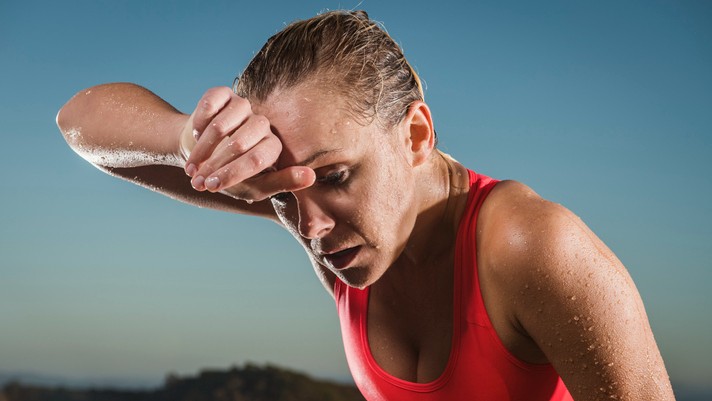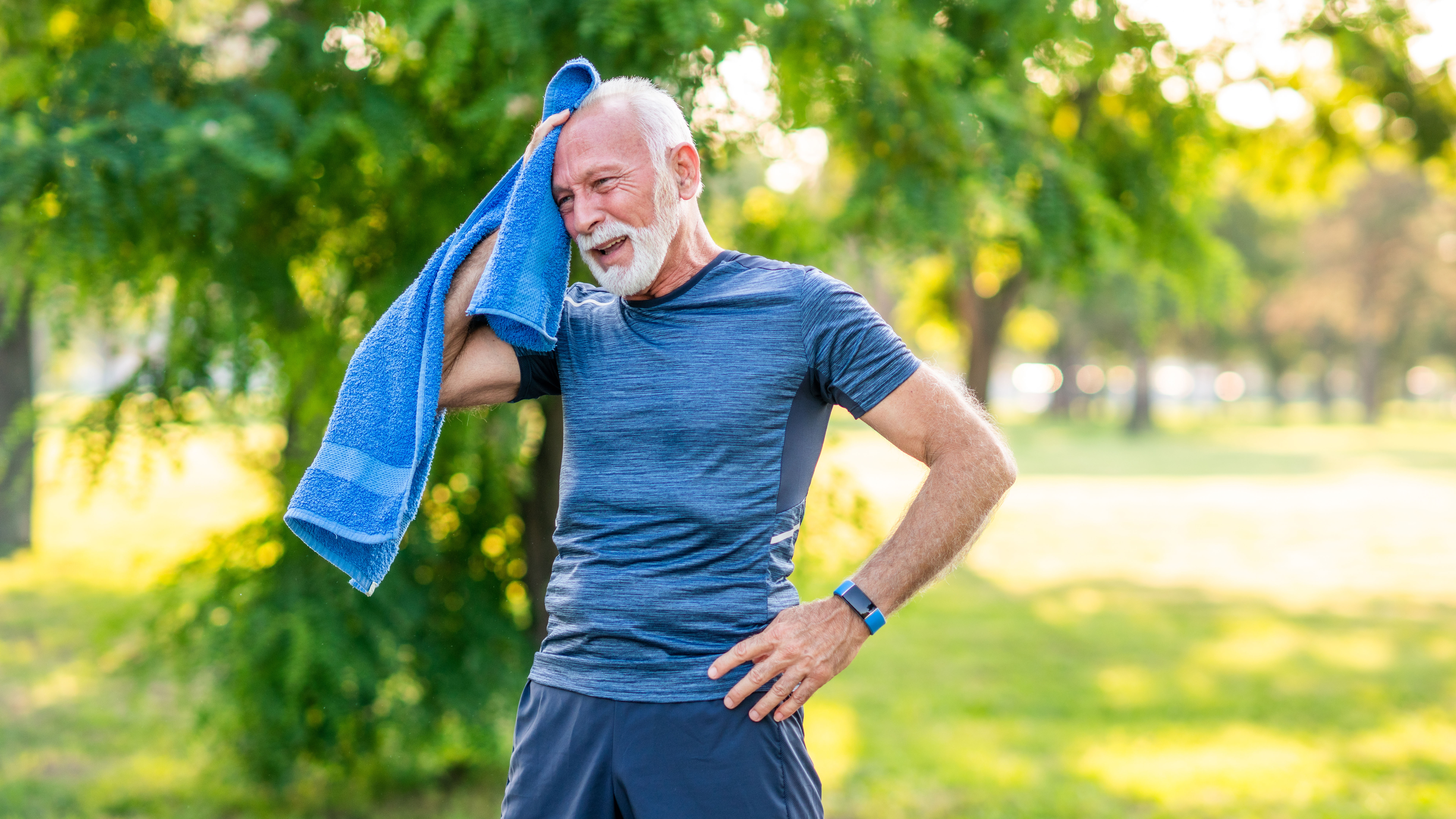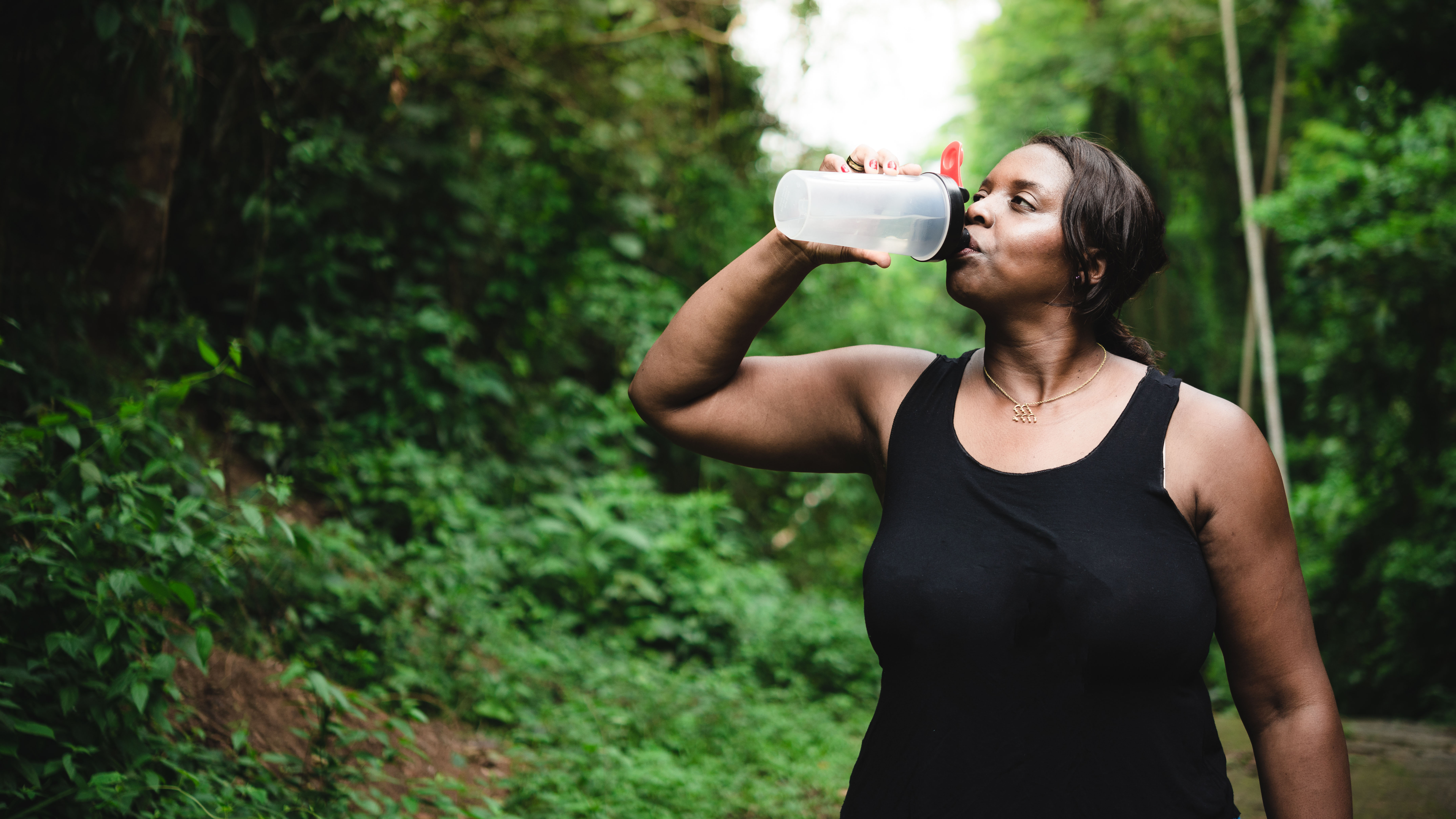Does exercise in heat burn more calories?
Does exercise in heat burn more calories? We asked a physiotherapist to explain

Does exercise in heat burn more calories? The short answer is yes; when you train and it’s hot out, your cardiovascular system has to kick into overdrive to cool the body down and maintain a steady body temperature.
If you were to do the exact same exercise in a mild climate and a hot climate, the additional 'cooling' efforts from your body in the warmer environment would likely lead to a higher energy expenditure.
However, the additional calories would be fairly minimal and there are are lots of other factors to take on board. Without the extra heat, you could achieve better results and burn more calories, because you could train for longer without any health risks or added stress on the body.
Let’s take a deeper dive and find out: does exercise in the heat burn more calories? And if you prefer to totally avoid the heat when training, check out the best time to workout and our guide to the best workout equipment for home.
Does exercising in heat burn more calories?
As outlined above, your body has to work harder in the heat to cool itself during exercise, so you could burn more calories – but any extra calories burned will have minimal impact on weight loss, says chartered exercise physiotherapist Helen O'Leary.
“During exercise, your body temperature increases to support the physical demands of the task. The body then regulates its temperature by sweating so that heat can dissipate into the air. Add to this process a hot climate, and your body has to work even harder to reduce its temperature."

Helen O’Leary is a chartered physiotherapist based in the UK and the clinical director of Complete Pilates.
Interestingly, our bodies can actually adapt to hotter environments, making exercise in sweaty temperatures feel less demanding. As outlined by the CDC, regular exposure to hot environments can improve sweat efficiency and increase skin blood flow, making it easier to regulate our temperatures.
Get the world’s most fascinating discoveries delivered straight to your inbox.
It doesn't take too long for these changes to kick in either. A reviewed published in Sports Medicine showed that people training in hotter environments for just 14 days could experience improved physiological adaptations.
O'Leary adds: “As with anything, we are amazingly quick at adapting so if you are regularly using heat-based training techniques, you will acclimatize and therefore the body won't work as hard and will need fewer calories to cool itself.”
- Related: Heat intolerance: symptoms, causes and treatment
What happens to the body during exercise in hot temperatures?
Exercising in hot weather will put extra stress on your body. The exercise you do, the air temperature and the humidity can all increase your core body temperature, and your body needs to work hard to get rid of this additional heat.
“During exercise, the main challenge of the cardiovascular system is to provide enough blood flow to the skin for effective temperature regulation but also to provide sufficient blood flow to the muscles to support metabolism," explains O'Leary.
When it's hot, your body will send more blood to circulate through your skin, but this will actually leave less blood in your muscles. Some researchers have theorized that this could increase your anaerobic metabolism, which is when your body transforms glucose into lactate – so you could be burning stored fat rather than using oxygen for energy. But not all of the latest research supports this.

The other thing your body will do to keep you cool is produce sweat: "The amount you sweat is linked to the amount of skin blood flow...[but] how much we sweat is variable and also depends on the environment we are in, clothing, and physical activity we are doing.
Sweating can, of course, lead to dehydration, especially if you're not replacing the fluid you're losing. This can trigger a bit of a vicious circle, according to O’Leary.
“Dehydration from sweat loss results in reduced blood volume and plasma tonicity [a cell's ability to move water] – both of which reduce sweat output and skin blood flow. Because of this, your body’s ability to get rid of heat is reduced and the risk of serious dehydration will rise."
How should you exercise in the heat?
Exercising in the heat can increase your risk of heat exhaustion: this is when the body overheats in response to external factors, like temperature. It can happen to anyone and is common in athletes. However, it can also happen when you are sitting in a hot car.
“You can still exercise in hot weather but it is important to consider a few things,” says O’Leary. “The higher the temperature, the greater the risk of dehydration or heat stroke. Look at when the day is cooling off and try to time your exercise for then. This generally means earlier mornings or later evenings.”

Is there a lot of humidity? If the answer is yes, this means that there is more water in the air, which will make it more difficult for your body to lose heat.
Making sure you are drinking water while exercising is key but also ensure you do this before and after your exercise to replace the fluid you have lost because of increased sweating.
“If you live somewhere cold and it is suddenly hot but you want to continue to exercise, simply start slowly and reduce your normal intensity levels while your body is adjusting. It can take up to around two weeks for this to happen so be patient with yourself and listen to how you are feeling!”
How much water should you drink in the heat when exercising?
Lots of research has been done around this and there is a very fine line between being ‘hyperhydrated’ (having excessive body water content) and ‘hypohydrated’
(being in a body water deficit.)
“The benefits of having near-optimal hydration is that it helps you maintain your mood, recover from exercise, perform well and have good heat transfer.
“If you want to be really specific you can work out your sweat loss (SL) by calculating: body mass before exercise (kgs) – body mass after exercise (kgs) + volume of fluid consumed during exercise (liters) – urine volume (if any in liters). Your sweat rate is then sweat loss (liters) / exercise duration,” says Helen.

What are some of the best exercises to do in high temperatures?
Helen says: “This partly depends on your ability and fitness levels and there is no one size fits all. All exercise can be modified for the hot weather; you just have to know your limits.
“On really hot days you can try things like stand-up paddle boarding, kayaking, surfing or swimming. All these help to keep you cool but will also help you stay fit and healthy." Keeping hydrated is key, too – remember to pick up one of the best water bottles and sip from it regularly.
“If you are a novice exerciser or have never exercised in the heat before, try doing more gentle workouts like Tai Chi or walking. You can also do some bodyweight beginners Pilates, yoga or gym-based exercises. Try to keep the program to the whole body rather than specific areas and let your body adapt. As we said, it takes around two weeks for this to happen.

“Knowing your exercise level is really important. If you have never exercised before, going for a run in the hot midday sun is not a good idea. Instead, build up your tolerance slowly and remember things take time to adjust!”

Maddy Biddulph is a freelance health and fitness journalist with over 26 years of experience working for consumer media in the US and UK. As a Level 3 personal trainer and weight loss advisor she is used to trying out and reviewing the latest health and fitness products. At Maddy Biddulph Personal Training, she runs one-to-one and small group sessions, as well as group exercise classes. She specializes in mobility work with seniors and runs regular chair workouts in her hometown of Oxford.


